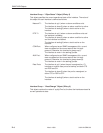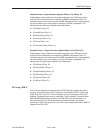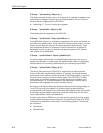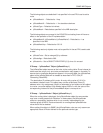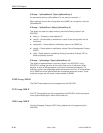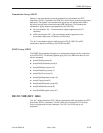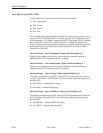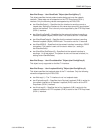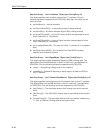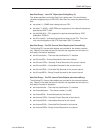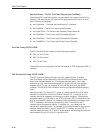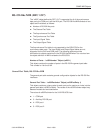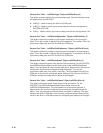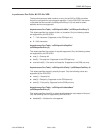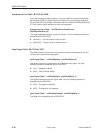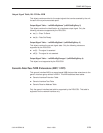
SNMP MIB Objects
E-14
3162-A2-GB20-30March 1999
Near End Group – “dsx1LineStatus” Object (dsx1ConfigEntry 10)
This object specifies the line (alarm) status of the T1 interfaces. Only the
following values are supported by the DSU/CSU. More than one value may be
active at a time.
H dsx1NoAlarm(1) – No alarm present.
H dsx1RcvFarEndLOF(2) – A yellow alarm signal is being received.
H dsx1RcvAIS(8) – An Alarm Indication Signal (AIS) is being received.
H dsx1LossOfFrame(32) – An Out Of Frame condition has persisted for more
that 2.5 seconds (i.e., Red Alarm).
H dsx1LossOfSignal(64) – A Loss of Signal condition has persisted for more
that 2.5 seconds (i.e., Red Alarm).
H dsx1LoopbackState(128) – The near end of the T1 interface is in a loopback
state.
H dsx1Other Failure(4096) – An Excessive Error Rate (EER) has been
detected on the network interface.
Near End Group – “dsx1SignalMode” Object (dsx1ConfigEntry 11)
This object specifies whether Robbed Bit Signaling (RBS) is being used. This
object differs from the MIB definition in that it is “read-only” (not read/write) for
DSU/CSUs. Only the following values are supported by the DSU/CSU.
H none(1) – No signaling is being used on this interface.
H robbedBit(2) – Robbed Bit Signaling is being used on at least one DS0 on
this T1 interface.
Near End Group – “dsx1TransmitClockSource” Object (dsx1ConfigEntry 12)
This object specifies the timing source for the transmit clock for this T1 interface.
This object differs from the MIB definition in that it is “read-only” (not read/write)
for DSU/CSUs. Only the following values are supported by the DSU/CSU.
H loopTiming(1) – The recovered receive clock is being used as the transmit
clock.
H localTiming(2) – The DSU/CSU’s internal clock is used being as the transmit
clock.
H ThroughTiming(3) – The recovered receive clock from another interface (e.g.,
T1, Port, or External) is being used as the transmit clock.



